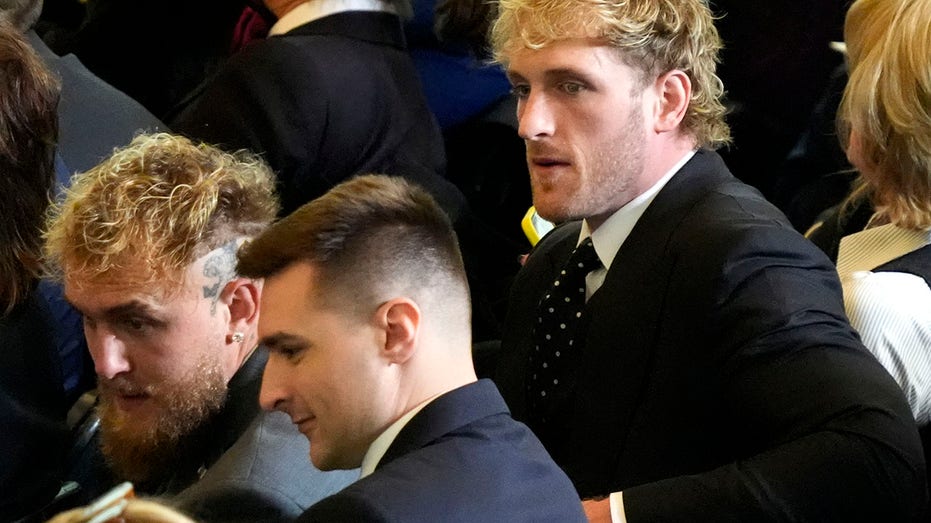- by foxnews
- 21 Jan 2025
More than 110 experts raise alarm over WHO’s ‘weak’ PFAS limits for drinking water
More than 110 experts raise alarm over WHO’s ‘weak’ PFAS limits for drinking water
- by theguardian
- 20 Nov 2022
- in news

More than 110 scientists and regulators worldwide are raising a public alarm over what they label "weak" PFAS drinking water limits proposed by the World Health Organization, which they charge used shoddy science and "arbitrarily" dismissed hundreds of studies linking the "forever chemicals" to serious health problems.
Some further alleged the process of developing the guidelines was corrupted by industry-aligned consultants aiming to undercut strict new PFAS limits proposed in the US, and weaken standards in the developing world. The chemicals have been called "forever chemicals" due to their longevity in the environment.
The limits would allow far more PFAS in drinking water than what is allowed or proposed by the US Environmental Protection Agency, most US states, and some agencies within the EU. WHO's guidelines and justification are "inexcusable", said Linda Birnbaum, a former head of the US National Toxicology Program and EPA scientist.
"WHO ignored the last 20 years of science, whether it's epidemiological data, animal data, or experimental data, and they said 'there's so much uncertainty that we can't do anything'," she told the Guardian.
Birnbaum was among a group of prominent independent researchers who signed a public letter demanding WHO withdraw or revise the guidelines.
PFAS are a class of about 12,000 chemicals designed to make products resist water, stains and heat. They are used in thousands of consumer products and thought to be contaminating drinking water for more than 200 million people in the US. Independent research links PFAS to cancer, birth defects, liver disease, decreased immunity, kidney disease, higher cholesterol and a range of other serious health effects.
The WHO is proposing drinking water limits of 100 parts per trillion (ppt) for PFOA and PFOS, two of the most studied PFAS compounds. The letter's signatories say the level will put human health at risk, and the EPA in June imposed new PFOA and PFOS advisory limits of 0.004 ppt and 0.02 ppt, respectively. The agency is expected to make the limits mandatory in the coming months, and some researchers suspect the WHO is aiming to derail that effort.
The WHO did not respond to a request for comment.
Some independent researchers say evidence suggests industry-connected authors played a large role in developing WHO's limits and justifications. Among them is Michael Dourson, whom Donald Trump in 2017 nominated to oversee the EPA's chemical safety division.
He withdrew his name after failing to get enough support in part over his alleged history of producing industry-friendly studies that backed chemical companies' safety claims, which the Environmental Defense Fund at the time characterized as "mercenary science".
Emails published by the New York Times show his close relationship with the American Chemistry Council, even while he served as an EPA adviser. The emails also showed one of Dourson's organizations at the University of Cincinnati, where he previously worked, accepted money from the American Chemistry Council and sent a research paper to it for editing, which some labeled an ethical violation.
The WHO document cites Dourson's work at least 17 times.
Dourson told the Guardian his most recent work received no outside funding and he took part in "very little activity on the WHO draft". He added that he withdrew from Trump's nomination for procedural reasons.
The report's critics also said positions taken by Joseph Cotruvo, a US consultant aligned with the nation's water utilities and other industries, underpin part of the WHO's case for higher limits. Many utilities have opposed stricter PFAS regulations because of cost concerns, and Cotruvo has publicly downplayed health risks and opposed stricter standards.
He told the Guardian he peer-reviewed and edited the WHO document, and called the idea of industry influence "absolutely false".
The WHO also listed as a contributor Linda Bevan, a consultant who conducted research for the PFAS manufacturer Chemours, formerly DuPont, that supported safety claims made by the company.
The WHO cites a number of independent researchers as peer reviewers, which provides the guidelines with an air of balance, but several contacted by the Guardian said they disagreed with the WHO's findings and signed the withdrawal letter.
A University of North Texas PFAS researcher, Katie Pelch, said she was not aware she would be listed as a peer reviewer, and added the process was different from standard peer reviews. Her significant concerns were not addressed and she did not review a final draft.
Tony Fletcher, a researcher at the University of Leicester, raised similar concerns, and said only some of his comments were addressed, while the final report was much different from what he had reviewed. He said the final copy contained many more references to Dourson's work than the draft.
The WHO justifies the high limits with the several broad claims: there are "significant uncertainties and absence of consensus" over whether PFAS cause health problems, as well as no consensus among EU and US regulatory agencies as to what drinking water limits should be. Dourson and Cotruvo pointed to studies that supported those arguments.
But regulators like the EPA and the New Jersey department of environmental protection raised concerns with the WHO's guidelines, which the latter called "not public health-protective or scientifically supportable" in a public rebuke of the WHO.
"NJ DEP identified the need for many revisions in both the factual information and the conclusions about health effects," it wrote.
Jamie DeWitt, a researcher at East Carolina University, said some studies cited by the WHO were misrepresented in the draft, and added, "The science was distorted in ways that some might consider to be inappropriate."
Some level of uncertainty is inherent in chemical exposure studies, she added, but said the WHO "inflates it" in a way that seems designed to preclude protective drinking water limits.
"Unless we do experiments on humans where we give people prescribed amounts of chemicals, then we're never going to know 100% that a particular disease is caused by a particular [chemical] exposure," she said, adding that multiple human studies on humans who were inadvertently exposed to PFAS strongly link the chemicals to health problems.
The disparity in drinking water limits, DeWitt noted, was a result of regulatory agencies across the world working under different political leadership and regulatory guidelines at the local, state and federal levels.
"[WHO] didn't dive into the reason why [the disparity] exists," DeWitt said.
The report also cast doubt on some specific health problems linked to PFAS, like decreased immunity, which could affect vaccines' efficacy. The WHO argues decreased immunity isn't clear because there hasn't been an increase in diphtheria or other diseases for which most Americans are vaccinated.
Cotruvo has previously publicly pushed that argument, and told the Guardian research suggested that only very high levels of exposure could have an impact on vaccines.
But DeWitt noted the real issue was a weakened immune response, so even if cases of diphtheria or mumps were not increasing, people were probably more susceptible to other illnesses. She added similar problems existed in the WHO's analyses of other health problems.
"There appears to be a lack of understanding about toxicological principles among those who authored this study," DeWitt said.
- by foxnews
- descember 09, 2016
'Aisle lice' is latest air travel annoyance to spark social media debate
A traveler who said he or she was flying on Delta asked social media users which is worse, "aisle lice" or "gate lice," when it comes to dealing with fellow passengers.
read more


